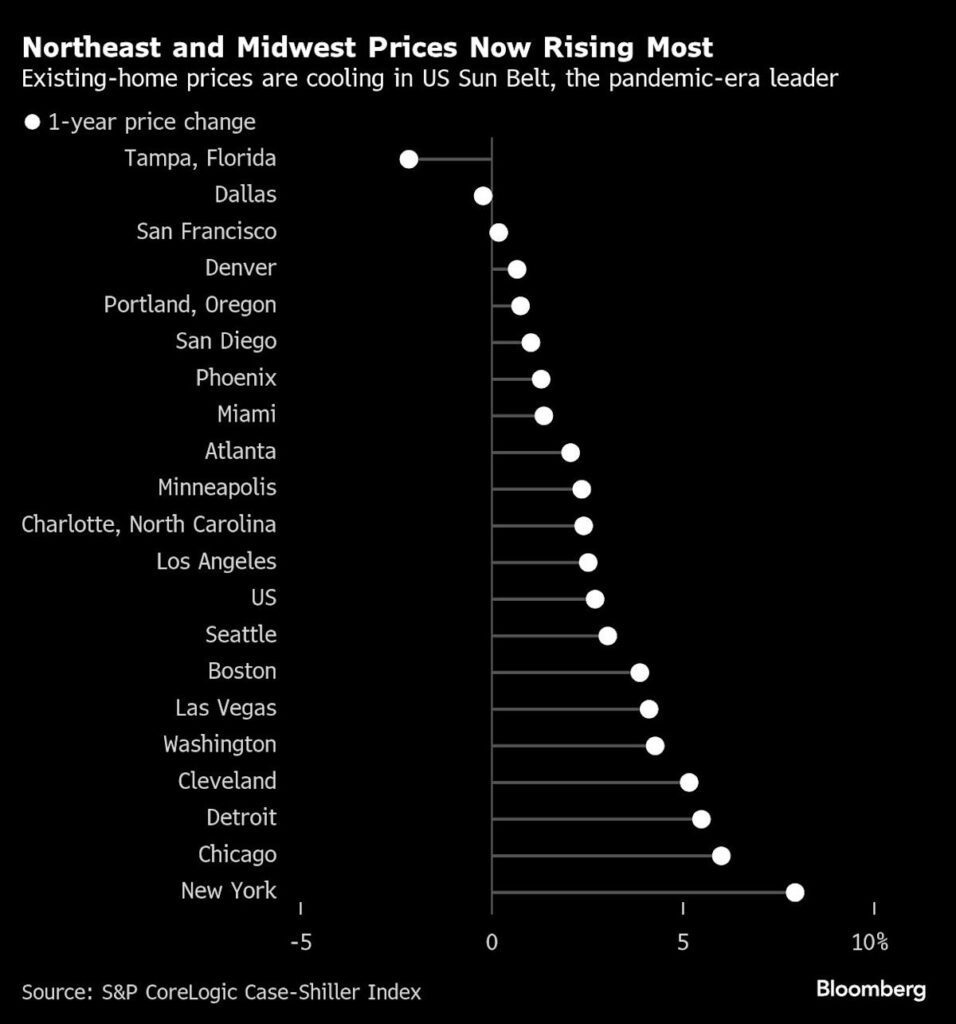The Shifting Landscape of the Housing Market in the Sun Belt
As the housing market experiences significant changes across the Sun Belt, a rise in unsold homes is becoming increasingly apparent. The once-booming regions are witnessing an unexpected buildup, marking a departure from the frenzied demand that characterized previous years.
A Surge in Listings and New Realities
Real estate agents in southern states are noting that property owners are opting to list their homes, dispelling any lingering hopes for a decrease in mortgage rates. For instance, in Florida, rising insurance costs are prompting many homeowners to put their properties on the market. Likewise, investors in Colorado are reevaluating their rental properties and making the decision to sell.
Key Statistics:
- Florida homes are currently taking a median of 73 days to sell, up from 55 days just two years ago.
- This new timeline is notably slower than states like New Jersey and Virginia.
Michael Lauer, a broker in Florida’s Tampa Bay area, notes, "In the big picture, it’s not horrible, but compared to what everyone was used to, it feels like molasses." Despite his steady business, he reports an overall 14% decline in sales within his county and a doubling of available homes for sale within two years.
The Growing Supply of Homes: A Double-Edged Sword
A surprising increase in home inventory is unfolding, a shift welcomed by many but unsettling for real estate professionals. The United States grapples with housing shortages that have persisted since the 2008 financial crisis, pushing prices beyond the reach of many prospective buyers. Recent years saw a steep increase in demand amid a widespread exodus to southern states during the pandemic, with many homeowners reluctant to sell their properties with favorable mortgage rates.
According to Drew Reading of Bloomberg Intelligence, “Historically, the supply of pre-owned homes is still below 2019 levels. However, nine states in the South and West have now surpassed these levels.”
Why the Increase?
- A surge in inventory is being reported nationally, particularly in regions like Colorado, where new and existing homes on the market soared 51% in May compared to the previous year.
- Landlords are also being driven to sell their properties as tenant-friendly laws reshape the rental landscape, particularly noted by Windy Bailey, president of the Pikes Peak Association of Realtors in Colorado Springs.
The Impact of Economic Realities on Sellers
Despite the current trends, sellers continue to feel the effects of economic fluctuations. Many homeowners still benefit from mortgage rates below 5%, providing little motivation to sell in today’s high-rate environment.
"For many, the days of coming back down to ultra-low rates are gone," explains Paul Epperley, president of the Fort Worth Real Estate Association.
Factors Influencing Selling Decisions:
- Increased insurance costs are compelling many homeowners to consider listing their properties.
- Job relocations and family commitments prompt some owners to sell, regardless of unfavorable mortgage conditions.
Investor Dynamics: The Role of Institutional Investors
While certain markets see an influx of inventory, the role of institutional investors remains complex. As local agents in cities like Atlanta, Dallas, and Phoenix speculate about possible sell-offs, Lawrence Yun, chief economist for the National Association of Realtors, underscores that quantifying these trends remains a challenge.
Insights on Investor Behavior:
- Most sellers in the market are smaller, independent investors.
- Conversely, larger institutional owners are currently purchasing fewer single-family rentals, but are not yet parting with their holdings.
Conclusion: A Market in Transition
The housing market across the Sun Belt is undergoing a transformation characterized by climbing inventories and evolving buyer dynamics. While desirable properties still attract attention, the previous frenzy has dulled. As Michael Lauer points out, “Everything you listed had multiple offers immediately. That’s long gone.”
For Further Insights:
- Explore more about the future of the real estate market at Realtor.com.
- For updates on mortgage rates and housing trends, visit Bloomberg.
As the market normalizes, stakeholders—from buyers and sellers to investors—must adapt to the unfolding scenarios that define today’s housing landscape.


